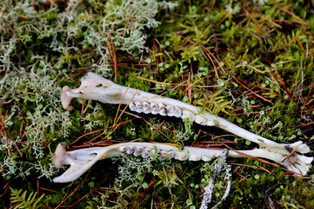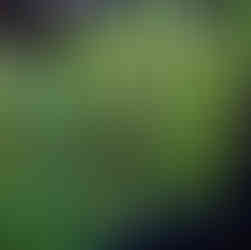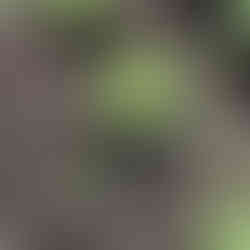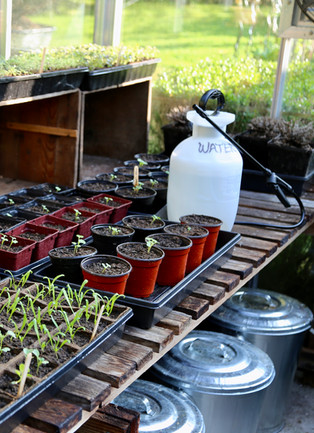Delicious, Nutritious Soil
- Upfront & Beautiful

- Nov 4, 2020
- 11 min read
Updated: May 7, 2021
One should be comfortable with, better yet 'love' soil and compost, to be a successful gardener or an urban farmer. Since last fall, I've been waxing poetic, nagging even, about soil and its magical properties, to Modern Farmer publisher Frank Giustra. I have no doubt that he thought me a bit bonkers at the outset, but very quickly and with great enthusiasm, he signed up for raised beds filled with living soil (more on that coming soon).
What follows is a tidier version of the disjointed bits and pieces I offered Frank, as we puttered late September in the greenhouse. In celebration of International Compost Awareness Week and its importance to the Million Gardens Movement, I have updated a post I started writing in the fall. So much has happened since, below ground in the secret, invisible, beautiful world of living soil.

Soil biology is a pre-occupation of mine, one I was introduced too organically as a student of permaculture design, native re-wilding, and culinary anthropology. One cannot help but trip over the importance of soil, with every step in any direction. Knowing what I know about soil has not only changed the way I garden, it has changed the way I live. What a different world it would be, if all children, all over the world, were taught basic environmental sciences, including units on soil biology and urban permaculture, in primary school. Could it be that simple?
Once I fully understood that healthy soil is an entire complex kingdom all of its own, alive with untold trillions of microorganisms and organisms (+1 billion per teaspoon), and that creating, maintaining and advantaging that kingdom system is essential to life on earth, I was hooked. Soil is life. Soil is beautiful. Soil is the composted net product of the largest natural system on the planet - the circle of life and death, and everything in between.
“Despite all our accomplishments, we owe our existence to a six-inch layer of topsoil and the fact [that] it rains.” Radio broadcaster Paul Harvey got it right when he said those few wise words in 1978, during a Future Farmers of America convention.
In the Pacific Northwest part of the world in which I live, this soil (biology) + water = life equation is apparent all around me. The temperate rainforest and our coastal weather systems produce rich humus within a beautiful whole system of life, death, decomposition and regeneration. The cooler on average temperatures of temperate rainforests moderate humus decomposition rates, and the thick coniferous canopies regulate and slow the release of organic nutrients.
Humus is the dark organic soil product of the natural composting of leaves, twigs, dead animals and minerals, by micro organisms (bacteria, actinomycetes, fungi, algae and protozoa), and organisms (worms, nematodes, mites, beetles, ants, springtails, etc), regulated by moisture and temperature. Soil organisms break down plant and animal tissue, bones and fibre, releasing stored nutrients and converting them into forms that are usable/consumable by plants. I took the photos above during a mushroom foraging outing on Cortes Island, where the temperate rainforest floor was springy from layers upon layers of decomposing material, adding to a thick bed of rich black humus that smelled of mushrooms and wet dog.

Sound familiar? Sound like composting? Exactly! Knowing this simple but amazing fact, and emulating nature's incredible logic in creating, utilizing, feeding and restoring organic compost in all aspects of gardening, has changed everything for me. Seeing a cluster of mushrooms growing up through a bed of fennel and beans makes me happy, because I know that the fungi and vegetables have formed a mutually beneficial below-ground mycorrhizal alliance (a huge and amazing soil internet and super highway, see above). To me, this is a sign of life and soil health, one that I see both in the garden and in the greenhouse, during periods of heavier moisture and/or precipitation, most particularly in spring and fall.

I am not a biologist, botanist, mycologist or scientist of any sort, but like most permaculture designers, I am deeply intuitive, instinctive and dialed-in to nature and natural systems. It comes naturally to me, to emulate nature's logic when and where I can, but also to accept that existing urban environments are largely disconnected from it. Thankfully, there are endless way in which we can capture whole natural systems and transport them in small chunks on their own, or together with other small systems, into our urban and suburban lives.
Organic compost is a product of one of those small systems. We are fortunate to be able to make some of our own compost, but many (I would venture 'most') people cannot make sufficient enough quantity to support regular feeding of their gardens. I have adequate square footage in my outdoor garden to have a large above-ground compost system, but in deference to the black bear, raccoons, skunks, coyotes, wild cats and other wildlife that inhabit the forest around me, I don't. If you are interested in larger scale composting, visit UK market gardener Charles Dowding's website. He knows what he's doing.
I worm compost only (vermicompost), and in-ground exclusively (in-situ), in raised beds, in closed and lidded systems that do not attract and negatively habituate wildlife, and that stay frost-free during the winter. I consider in-situ composting for raised beds, an urban permaculture necessity; a small-scale mimicry of a massive circular system found in nature. Our worm composts manage most of our green kitchen waste*, plus egg shells, a portion of coffee grounds, and some shredded brown paper.

Tips for making and maintaining an in-bed worm compost
Find a large plastic or PVC bucket with a lid: a five gallon bucket works well in a 4'x8' bed, and one to three gallon buckets work well in smaller beds or large container gardens. A short section of very wide PVC pipe with an end cap works too.
Clean the bucket thoroughly.
Drill 1/4" holes every few inches, staggered, along the sides and the bottom, to within two or three inches of the top of the bucket.
Sink the bucket to just below the top ring, ensuring holes are covered by soil on the outside.
Lay an inch or so of clean, shredded brown paper along the bottom of the bucket as bedding.
Add an inch or so of mixed kitchen scraps (produce only, no meat or fat or oils), chopping them first helps speed up the composting process, sprinkle over a bit of soil or compost, top with a thin layer of brown paper bedding and water-in just to make the paper damp. Egg shells and coffee grounds (not too many) are great additions too.
Add a handful of red wriggler compost worms (available online, and through municipalities), and watch as they dig in. They will reproduce like crazy, very quickly, so you can populate several composts from a single starter batch of worms.

Place the lid on the bucket but don't snap it shut (you'll likely never get it open again), and weight it down with a rock to keep out critters.
Keeping the outside of the bucket clean, the lid on, and the holes below soil level will keep odours down and prevent unwelcome visitors. I've never had an issue and I have one vermicompost per bed.
Add bed trimmings, fallen fruit and veg, fallen leaves, etc to compost as you clean your beds, and check the worms regularly to make sure they are happy and eating well.
Turn contents regularly, gently, to observe moisture levels. If too wet, add brown paper or brown leaves, if too dry, add juicy green trimmings or sprinkle lightly (don't drown your worms).
A 3:1/4:1 ratio of brown/dry, to green/wet is recommended, but I don't worry too much about it as excess moisture seems to be drawn out of the compost by the surrounding soil and visa-versa. Freestanding traditional composts and also freestanding vermicomposts are more particular than in-bed vermicomposts, in my experience.
The compost level should drop down naturally as wrigglers and garden variety worms, and many insects carry material out of the compost and into the bed, but it is sometimes necessary to remove a scoop or two of contents. I simply bury this material deep, elsewhere in the garden, or add it to a less full compost elsewhere.
Many of our friends keep handsome purpose-built freestanding worm composts outside in the shade on their balconies or patios, taking them inside for the winter, continuing feeding in their basements, mudrooms or garages. Worm castings (poop), and worm poop tea are nature's most magnificent natural fertilizers. Close-quartered *compost worms don't love citrus, onions or garlic so I toss those into our yard clippings bin

Our yard trimmings are set out at the curb weekly in compostable brown bags, for pick-up and transfer to a community-based composting facility. Household (kitchen) greens are set out for pick-up as well, in separate containers, but because we worm compost, we don't use the greens service.
Residential and commercial pick-up programs for composting yard trimmings and household greens are critical to environmental health as they keep organics out of landfills, where, if buried deeply in anaerobic (without oxygen) environments, they create methane gas. When released into the atmosphere, methane gas is 25 times more potent as a greenhouse gas, than CO2 (carbon dioxide). Composting on the other hand promotes aerobic (oxygenated) decomposition into a useful waste by-product.
Compost blends made from community and residential inputs (as above) are used in and sold to commercial, parks and recreation, agricultural, and remediation clients. Community compost is not certified organic, and I cannot therefore use it in my permaculture garden. I recommend that all gardeners use caution when buying compost from an unknown source because you just never know what sorts of pesticides and/or rodenticides may find their way into your vegetable beds. Thankfully, excellent quality organic compost by the bag is widely available at garden centres across the country.

I buy organic composted soil in bulk, made by an organic farm collective. The living soil contains a fully composted blend of garden and kitchen waste (fruit and veg only), very finely shredded wood fibre, four types of manure, and a small amount of sand. This compost blend represents a beautiful but much accelerated simulation of what happens in nature slowly, as soft green vegetation, woody vegetation, animals and micro-organisms, and minerals, decay and compost over time.
The product is very well composted to ensure that weed and other seeds, plus pathogens like ecoli are killed at sufficiently high temperatures, over sufficiently long periods of time. Frequent turning and intense composting action break the inputs down impressively well, so the delivered product is quite light and airy, and finely grained, and it is dark black like forest floor humus. After I receive the compost by the tiptruck load, the steaming pile stays very warm for weeks on end, unless I open it up for use.
I can place a huge storage bin full of hot compost in the greenhouse, and use it to bottom heat seedling trays. This all-natural heat mat system works really well and uses no electricity.

My raised and in-ground beds are filled with 100% organic compost at the outset, and I top them up each spring, and again slightly in the fall before winter planting. I keep about six bushel buckets full in the greenhouse, for use as a seed starter mix (keep soil moist and turned to maintain biology). I admit to being a bit of a control freak about seedlings and transplanting, preferring to start pretty much everything except carrots, parsnips and radishes from seed, in pots set in trays in my nursery garden, or in our small un-heated greenhouse.
Given that seeds have a less than 100% germination rate, I prefer to know how many viable plants I have to distribute in any given space, 'before' I commit to placement. This allows me to space the seedlings evenly and have no crazy-making blank spots. Weird, I know. I like symmetry, can't be helped. We are fortunate to have inherited an old greenhouse, but you absolutely don't need one to start seeds in pots.
Also, I believe that environment is key to plants health and that plants should be raised in the soil they are born into. Starting seeds in fined organic compost, then transplanting them into beds of organic compost, really improves their odds. Unless a predator critter or my veggie dog Dave digs them up, the seedlings make the transition successfully pretty much every time.

To prepare compost for seed modules or small pots, I rub small handfuls of organic compost between my palms, and drop it from a height (Jamie Oliver with chopped herbs style) of a few feet, into a shallow grain bucket (livestock feed stores have super sturdy and barrels for very low prices). This action slightly separates the particles and aerates them slightly, without damaging the biology or drying out the soil. Tiny wee seeds then stand an excellent chance of breaking through the surface of the soil when they germinate, and they are born into a soil environment rich in nutrients that helps them grow into strong, healthy seedlings for transplant.
I understand that sterile soil mixes and synthetic soil mixes work well for many gardeners, but I know too that the germination failure rate for fibre-rich potting mixes can be quite high, if the surface dries out only slightly, developing an impenetrable crust. Screened (or palm-rubbed) compost on the other hand, due to its organics content, retains water extremely well, and is resistant to surface crusting.
Thankfully, organic compost is often available at a lower cost per bag than sterile or fortified mixes. Many towns and cities have one or more sources of bulk organic compost available for delivery. Before I had enough raised beds to warrant bulk delivery, I would drive my SUV to the compost yard, and load up nine beat-up old five-gallon buckets of compost per trip, until I had enough. It was great exercise and if I made three trips, I could bring home one cubic yard of compost (one five-gallon bucket = 1 square foot more or less) in an afternoon. One 4'x8'x18" raised bed equals 48 square feet and requires 1.5 cubic yards of compost (27 cubic ft in one cubic yard).

I have collected hundred of plastic pots of all sizes from 4oz six-packs to one-gallon over the years, and I use them over and over to pot-up in succession, everything from tomatoes to Brussels sprouts. For small greens and lettuces, I prefer to use the brown paper compostable modules. I like these because tiny roots break through the pot fibres, telling me when they are ready to transplant, and also because the pots are themselves compostable.
This past fall, I was unable (too busy canning summer produce) to pot-up some Italian endive, wild mustards, purslane and spinach. I had sown multiple seeds per pot, intending to pot them up further individually, as they came of age, as I had done with the rapini seeds Frank had given me in September.
It didn't happen that way, but because they were sown in compostable pots, I was able to peel down the by-then self-composting pulpy sides and gently break apart the seedlings for transplanting into their raised bed coldframe and some winter patio pots for friends . I tossed the pot bits straight into the in-bed worm composting bins, where they were immediately put upon by hundreds of red wrigglers, seemingly ravenous for carbon content. As the weather grew colder and the days shorter, both the vegetables and the worms slowed down. Still though, thanks to the magic of living soil, I had a regular crop of greens, root vegetables, broccoli and tiny carrots, all through the winter.
This week, as my spring peas reach for the sky, and my herb spiral springs to life, I am still enjoying rapini-like kale sprouts, mustards, beets and the last of the winter beets. I credit the magical properties of compost with the resilience of my all-season garden.
A major benefit of using compost for seed starting is the compost tea by-product that is produced after watering more than one should. While I try to maintain a constant soil moisture and texture similar to moist chocolate cake, and water only minimally but consistently so that the moisture need not run through the pot, it happens that I forget or the temperature rises so much that extra watering is required. On those occasions, the run-though is nothing short of instant high potency compost tea, which I collect from the tray that the small pots are resting in, and set aside for future use. To let this precious liquid commodity dry up in the tray, would be such a waste.
Sidebar: on the subject of fragile seedlings planted in living soil, I've adopted an optimal way of watering wee sprouts in the greenhouse. A resource saving method that doesn't bend tender shoots under water weight, or soak the soil unnecessarily. A bulk pump sprayer, intended for pesticides (which I of course would never use) but used only for water, sprays a beautiful fine, temperate rainforest-like mist that tiny green guys love. The one-gallon size tank full of water lasts seemingly forever. These sprayers are often available used on Facebook Marketplace and in thrift stores (make sure to wash them well with hot biodegradable soap and water, before using.
In closing, I encourage you to get your hands dirty (gloves on or off), and get up close and personal with some beautiful living soil. Plant two seeds from a single seed packet, side by side in 6" pots; plant one in sterile garden centre planting medium, and one in fully composted living soil. Keep well watered and observe for several weeks. You won't believe your eyes. Send us the photos.

Happy Gardening!
To watch the Modern Farmer | Million Gardens Movement video "Organic Compost" featuring our urban permaculture garden, on YouTube click here.
Subscribe to the Modern Farmer channel watch future permaculture segments.

































Comments